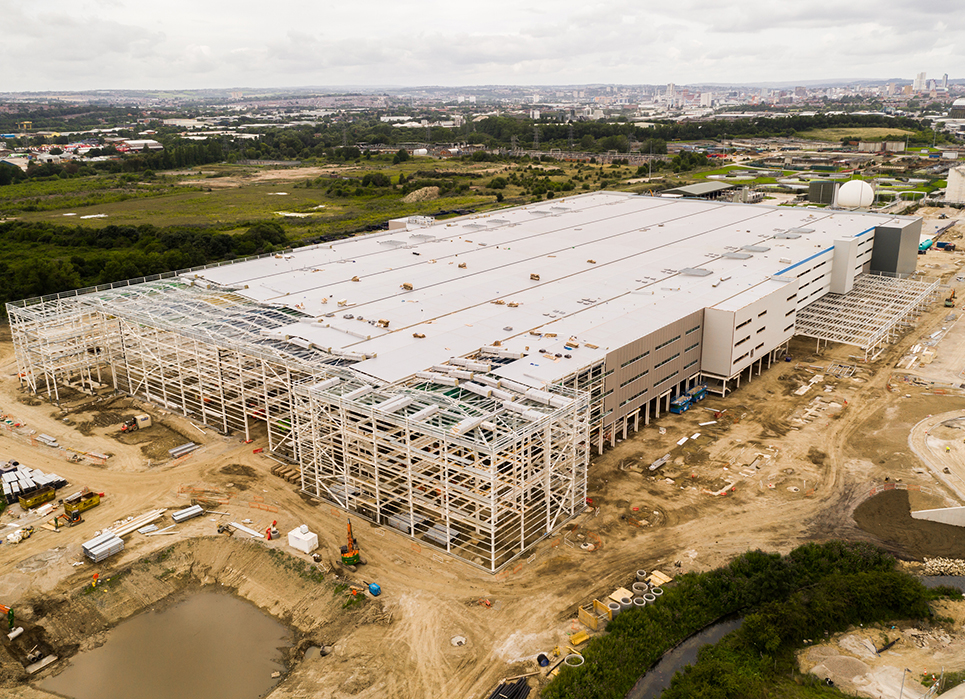Industry Trends Meeting: U.S. Economic Policy and CRE Research Priorities

This spring, NAIOP Research Foundation Governors, Visionaries and Distinguished Fellows met in New Orleans to discuss trends affecting the commercial real estate industry and suggest possible topics for future research. The meeting opened with a presentation on the outlook for the U.S. economy by Douglas Holtz-Eakin, Ph.D., president of the American Action Forum and former director of the Congressional Budget Office. Holtz-Eakin outlined a series of policy-related challenges that he expects to slow economic growth and raise inflation.
Holtz-Eakin observed that the U.S. economy entered 2025 on strong footing, with a low unemployment rate, solid wage growth, and stable inflation, albeit not yet at the Federal Reserve’s target of 2%. Several months into 2025, inflation has ticked up and consumer and CEO confidence are down. Holtz-Eakin outlined four elements of the Trump administration’s policy agenda that are having mixed effects on the economy: immigration policy, regulatory reform, trade policy, and tax policy.
Some are concerned that increased immigration enforcement could lead to labor shortages in industries like construction. Holtz-Eakin has not seen signs of a significant effect on the current labor force but noted that a large influx of skilled immigrant labor during the Biden administration had helped fill job vacancies and made it easier for the Federal Reserve to reduce inflation without triggering a recession. Now that immigration has been significantly curtailed, he expects that the Fed will find it harder to tame inflation going forward.
The Trump administration announced plans to significantly reduce the number and scope of federal regulations, with the objective of reducing the regulatory burden on the economy. Holtz-Eakin observed that it remains to be seen whether this goal will be achieved, as the net cost of regulatory changes has increased by $2.5 billion since the start of the current administration.
Holtz-Eakin expects that the changes to tax policy that are currently under discussion are unlikely to have a large impact on the economy. The bulk of the effort is focused on extending the 2017 tax cuts, which is a political necessity for Republicans, but will have no net effect on economic activity because it will not lead to a reduction in the current tax burden. A few proposed changes, such as allowing for 100% bonus depreciation and full expensing for research and development, should theoretically encourage business investment, but would not be permanent, significantly muting their impact. Other proposed tax provisions, such as exempting tips, social security, and car loans from taxation are likely to be income-capped and temporary, and so would also have a marginal economic impact, especially when compared with the stimulative effects of the original 2017 tax cut.
By comparison, Holtz-Eakin expects tariffs to have a more significant and negative effect on the economy. Even when factoring in the suspension of higher tariff rates on most U.S. trading partners to allow for trade negotiations, the current average effective tariff rate is around 16%, much higher than the 2% rate when President Trump came into office. Holtz-Eakin does not believe the administration is likely to walk away from the 10% universal tariffs, since Trump campaigned on that rate. Even if the current 30% tariff rate on China is extended indefinitely, it will have a big impact on trade. He also does not see a clear upside for U.S. manufacturing. For example, tariffs on steel are unlikely to lead to a large-scale increase in manufacturing jobs, as the decline in steel industry jobs in earlier decades was not due to trade but to technological innovation as steel producers switched from carbon-intensive mills to electric mills, and capital investment migrated to advanced manufacturing. In sectors like the pharmaceutical industry, where it takes five or more years to plan and build a new manufacturing facility, there is no guarantee that the tariffs that have been announced will still be in place when production finally comes online.
Netting out the effects of immigration, regulatory, tax and trade policy, Holtz-Eakin expects a significant slowdown in the U.S. economy but believes the U.S. could still avoid a recession. The biggest unknown factor shaping the economy will be whether households reduce their consumption or continue to spend. If consumers pull back, then businesses will find it difficult to justify new capital expenditures.
In the group discussion that followed Holtz-Eakin’s presentation, attendees suggested that the NAIOP Research Foundation consider researching a variety of topics in the years ahead, including skills needed for effective use of artificial intelligence; how regulatory differences in different states affect how companies compete for electrical power availability; how tariffs affect the viability of new solar installations; potential incentives for onsite power generation; the availability of water for new development; the economic effects of moratoriums or prohibitions on new industrial real estate development; whether and how zoning ordinances that mandate affordability requirements for new multifamily construction affect housing affordability; the outlook for medical office buildings; and how local legislation affects CRE capital markets.

